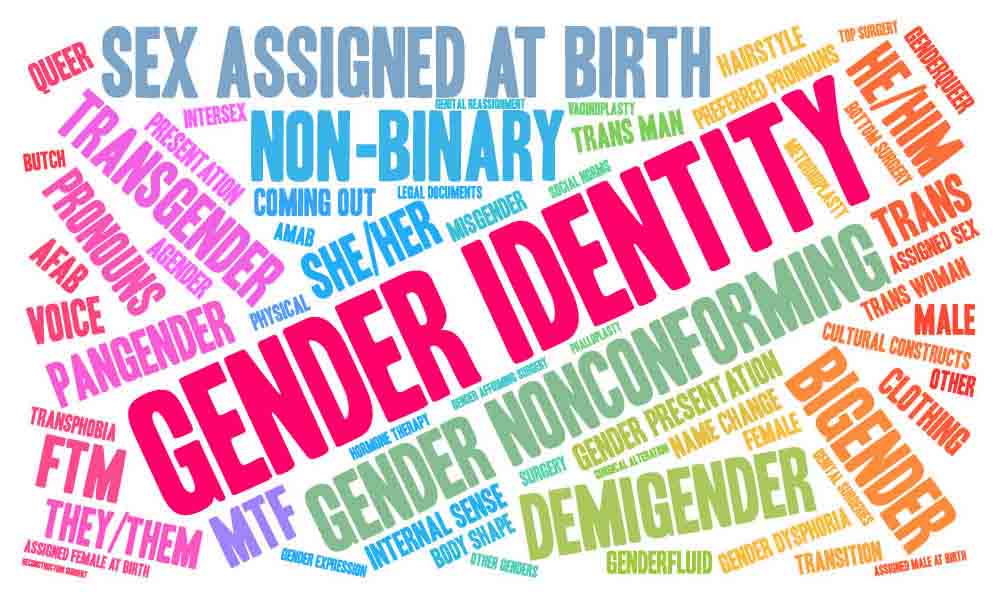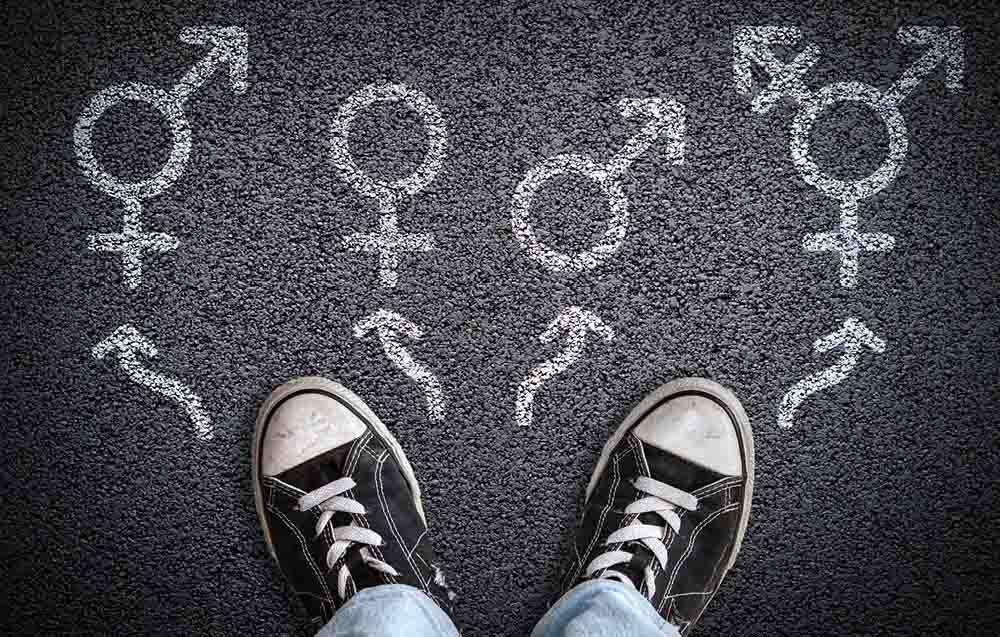“I am so much better. I am not that dysphoric anymore,” my friend Ron* recently told me, and I let out a sigh of relief. Watching a friend or any loved one go through gender dysphoria can be difficult, especially if your intent is to help and support them, but don’t know how to begin. A little knowledge about gender dysphoria can help a long way. In my case, knowing Ron* and their journey is what triggered the need to know more about gender dysphoria. If you have a loved one who is going through the same, read on to find out everything you need to know about gender dysphoria.
What Is Gender Dysphoria?
With more awareness about transgender rights, many of us already have a basic understanding of what dysphoria entails. In case you don’t, here goes. Every human being is assigned a gender at birth, which are usually assigned female at birth (AFAB) or assigned male at birth (AMAB). People who grow up to have the same psychological sense of their gender as the one assigned to them at birth are known as binary or cisgender. Those whose sex assigned at birth does not match their gender identity are non-binary or transgender (terms like gender diverse are also used).
According to the American Psychiatric Association (APA), some people who are gender diverse experience gender dysphoria, which refers to the psychological distress that arises due to “an incongruence between one’s sex assigned at birth and one’s gender identity.” The APA reveals that though gender dysphoria mostly begins in childhood, some people may not experience it before they are well into their adolescence, when the body changes and secondary sex organs start developing. In some cases, gender dysphoria can even kick in during adulthood.
Whenever it does develop, gender dysphoria can lead to more than just psychological distress. The UK’s National Health Service (NHS) reveals that though gender dysphoria is not a mental illness in itself, some people may have a very intense sense of unease or dissatisfaction with the mismatch between their assigned gender and gender identity, which in turn can lead to many harmful impacts on their mental health, including the development of anxiety and depression.
The APA suggests that many transgender and gender diverse people find the resolution to their dysphoria through different kinds of gender affirmations. This could include:
• Social affirmations, like changing the name and pronouns.
• Legal affirmations, like changing gender markers on government-issued documents.
• Medical affirmations, like pubertal suppression or taking gender-affirming hormones.
• Surgical affirmations, like vaginoplasty, facial feminisation, breast augmentation, chest reconstruction, etc.
It is critical to note here though that not all people who are gender diverse may desire all kinds of gender affirmations. These are very personal and individual decisions, and each person may have a very different journey. Ron* agrees: “Dysphoria can’t be a universal experience. It has to be an intersectional experience. It is also deeply individual.” So, making assumptions about what every gender diverse person wants or needs, or creating new stereotypes to create a homogenous category for them, is simply not the answer to gender dysphoria.

Signs Of Gender Dysphoria
When it comes to the signs of gender dysphoria, the NHS suggests that people with gender dysphoria may change their appearance, behaviour, or interests. They may also show the common signs of distress, like low self-esteem, becoming withdrawn, isolating socially, taking unnecessary risks, neglecting themselves, or experiencing the symptoms of anxiety, depression, and even body dysmorphic disorder. Do these signs seem too generalised? The Diagnostic and Statistical Manual of Mental Disorders (DSM-5), the key textbook used by mental health professionals worldwide, provides separate criteria for the diagnosis of gender dysphoria, based on age—children have a specific criteria and adolescents and adults a separate criteria.
According to the DSM-5, if a child experiences at least six of the following for a period of six months or above, they might have gender dysphoria:
• A strong desire to be of the other gender, or verbal insistence that one is the other gender.
• A strong preference for cross-dressing or simulating female attire in AMAB, or a strong preference for masculine clothing or resisting feminine clothing in AFAB.
• A strong preference for cross-gender roles while playing, especially make-believe or fantasy play.
• A strong preference for toys, games, and activities stereotypically engaged in by the other gender.
• A strong preference for playmates of the other gender.
• A strong rejection of typically masculine toys, games, and activities (including rough-and-tumble play) in AMAB, or a strong rejection of typically feminine toys, games, and activities in AFAB.
• A strong dislike of one’s sexual anatomy.
• A strong desire for the physical sex characteristics that match one’s gender identity.
As per the DSM-5, if an adolescent or adult experiences at least two of the following for a period of six months or above, they might have gender dysphoria:
• A marked mismatch between one’s experienced or expressed gender and the assigned gender as well as the primary and secondary sex characteristics associated with it. In adolescents, this may also manifest as an apprehension of developing secondary sex characteristics, like breasts in the case of AFAB.
• A strong desire to be rid of one’s primary or secondary sex characteristics because of the incongruence between experienced gender identity and assigned ones. In adolescents, this may manifest as a desire to prevent the development of the anticipated secondary sex characteristics.
• A strong desire to have the primary or secondary sex characteristics of the other gender.
• A strong desire to be of the other gender, or any alternative gender different from the assigned gender.
• A strong desire to be treated as the other gender, or any alternative gender different from the assigned gender.
• A strong conviction that one has the typical feelings and reactions of the other gender, or any alternative gender different from the assigned gender.
However, as mentioned before, the experience and journey of every gender diverse person may vary. These DSM-5 criteria are for trained professionals equipped to care for people with gender dysphoria, and the DSM itself is updated every few years to include more up-to-date research and data regarding the mental health issues it describes. Research into gender dysphoria is still in its nascent stages, which is why making amateur assumptions based on the above is not recommended.

Gender Dysphoria Resources In India
A 2016 study published in the Indian Journal of Endocrinology and Metabolism highlights in no uncertain terms that there is a “paucity of scientific data from India on gender identity disorders (GIDs) or gender dysphoria (GD).” The study explains that even though there has been a significant rise in gender-variant persons looking for care from mental health professionals and institutions across the world in the last decade—mostly fuelled by more information being available online, and increased access to gender diverse personalities and experiences on social media (think Elliot Page or Asia Kate Dillon, for example)—there is still a lot to be done in countries like India.
Social taboo, lack of awareness, and lack of family support are some of the key driving forces behind the problems faced by people with gender dysphoria in India. “We need more resources. India has no resources that can help people with gender dysphoria,” Ron* agrees, while admitting the clear privilege they perhaps enjoy where others with gender dysphoria have more compounded struggles. Here, Ron* pinpoints another issue that exacerbates the gender dysphoria that gender diverse Indians may face. “I feel that dysphoria and its cure is also a very class- and caste-specific experience,” they add. “How many can access the language to call their experience dysphoria? How many can pinpoint and reach places where they will get help? How many mental health professionals can even diagnose dysphoria in India?” While Ron* has been able to navigate through gender dysphoria and arrived at a point where they can proudly say, “I am non-binary”, while continuing on their journey of healing, there are clearly many who are in need of your help.
Raising awareness, learning more about others instead of fearing, disdaining, threatening, or marginalising them, creating better systems of support—these are all the little, yet significant things we can all do to support people with gender dysphoria in the country and the world. So, if you know someone who is in distress around you, reach out. Be a true ally by learning more yourself and offering support where you can. Educate yourself and others, and ask for more resources and policies from those who can provide them. That’s the best any of us, no matter what our gender identity, can do.
*Name changed for privacy